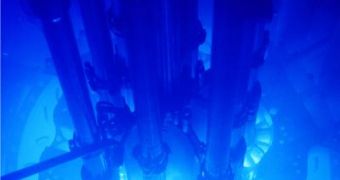Seemingly the U.S. government is also beginning to think about its role in the global warming effect and the energy dependency after ignoring most of the treaties regarding carbon dioxide emission reduction for the last years. As a result, the U.S. Department of Energy will make available to study a nuclear facility for tests, situated southeast of Idaho in the hope that they will learn how to build better nuclear power plants in the future.
According to Ivonne Couret, public affairs officer for the Nuclear Regulatory Commission, in the last years the interest in commercial nuclear power has grown, which reflected in the increasing number of applications received for the building of new nuclear power plants. Since September, the NRC has received a total of four applications to build seven new reactors and was notified by a number of companies that they intend to apply more than 17 new applications for the building of 25 reactors through 2009.
Last year, the Idaho reactor has been designated to the National Scientific User Facility as a test reactor for university use, in the hope that experiments would develop new nuclear fuel materials and instruments that are usually used in the nuclear reactors. It seems that at least two of the experiments will start at the beginning of next year, as soon as they will be approved.
Due to the fact that the experiments are made for scientific use, the universities operating the experiments will not pay for any of the expenses, but they are forced to publish the results.
Since 1996, when the Watt Bar nuclear reactor in Tennessee started operating, no other nuclear reactor has been built, although this trend seems to be changing as two new commercial nuclear power plants have been proposed in Idaho and might be placed somewhere about 112 kilometers outside Boise.
Currently, in U.S. there are 104 commercial nuclear operating power plants that produce about 19 percent of the electric energy needed, while about 49 percent is still produced by burning fossil fuel, mainly coal. According to Mitchell Mayer, director of the Advanced Test Reactor National Scientific User facility, in the world there are only three other similar experiments using three test reactors, one in Russia, one in Belgium, and another one at the High Flux Isotope Reactor at the Oak Ridge National Laboratory, in Tennessee.
But what makes the Idaho nuclear reactor ideal is that it is able to run multiple experiments at the same time. It is generally expected that opening such a facility for university study will greatly advance the knowledge about nuclear power and is estimated that about twenty-four universities in the U.S. have programs that research in this domain.
However, critics soon appeared as Snake River Alliance highly disagrees with the policy of spending federal money to make experiments on nuclear reactors.

 14 DAY TRIAL //
14 DAY TRIAL //